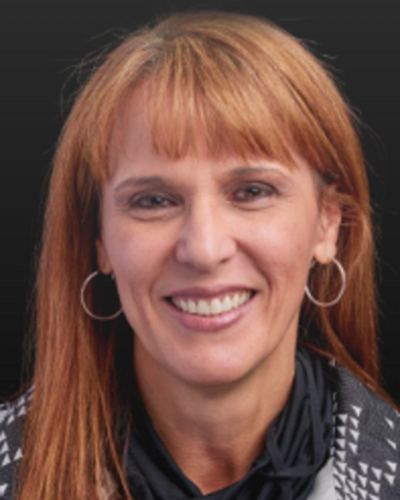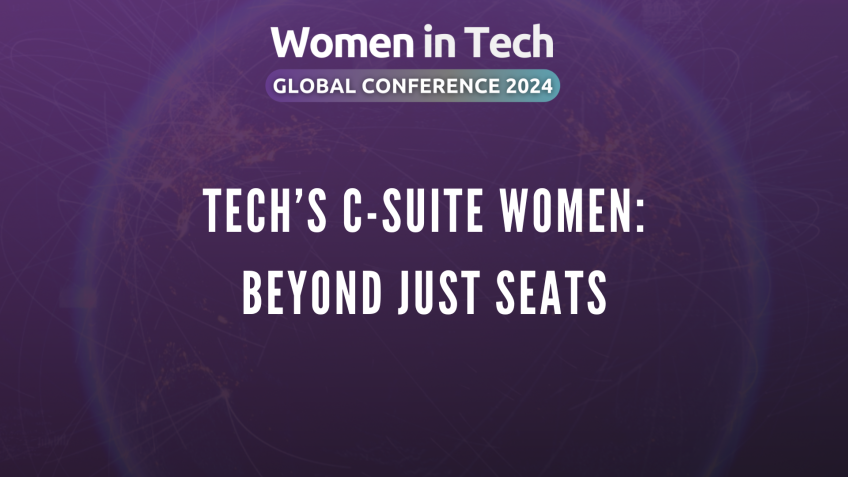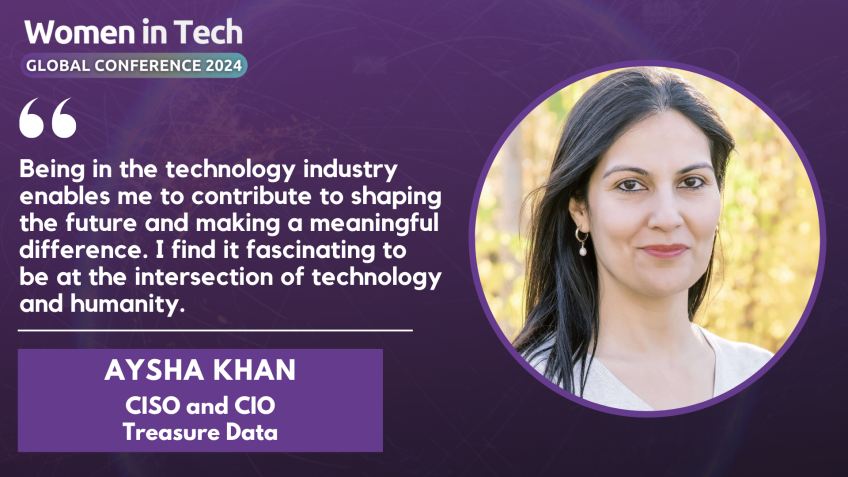Building Diversity: Elevate Underrepresented Voices and Leaders in Tech
Rosa Thomas
Sr. Software Development ManagerElevating Unrepresented Voices and Leaders in Tech
Good morning, everyone, and welcome to this exploration of how we can raise the profiles of unrepresented voices and leaders within the tech industry. Our focus will be on leadership, creating a culture of inclusion, and implementing effective strategies to attract and retain diverse talent.
Defining Leadership
When I refer to “leaders”, I don't just mean those in managerial positions. Individual contributors are also key members and vital drivers of culture within an organization. Both management and individual contributors can help set the culture and values for an organization to help elevate others.
In my own recent experience, I encouraged a wider selection of people to contribute to our work culture through a “pass the pen” exercise. This initiative engaged everyone in drafting key cultural tenants for the organization. The results resonated powerfully with the team, and I encourage you to implement similar initiatives within your own team.
Create Opportunities within and beyond Your Team
Leadership means not only creating opportunities within your team but also reaching out beyond your immediate environment. Engage with affirmative programs, strategic efforts, and universities to attract diverse talent. This outreach can help enrich your talent pool and make diverse candidates feel personally valued.
From Good Intentions to Results
While good intentions are important, they must be backed up by concrete action. This involves implementing structures, processes, and mechanisms to ensure these intentions translate into meaningful outcomes. These outcomes could revolve around sourcing, interviewing, onboarding, and retaining leaders, helping to transform good intentions into tangible results.
Sourcing and Interviewing Leaders
When it comes to sourcing potential leaders, remember: you are the most important actor in the process. Be intentional about sourcing diverse candidates. This means actively reaching out, filtering effectively, and creating a personalized connection with each potential candidate.
Preparation plays a crucial role in successful interviews. Using well-thought-out questions and ensuring diversity in your interviewing panels can create a welcoming environment for candidates. This is pivotal to providing a positive interview experience that assures candidates they can belong and succeed in your organization.
Effective Onboarding and Retention Strategies
Onboarding is where the real work begins. Being intentional in creating a robust onboarding plan that sets newcomers up for success is a critical first step to retaining talent. Ensuring an inclusive environment that respects diversity in thoughts, experiences, and backgrounds is crucial for an effective onboarding process.
Equally, successful retention relies on identifying the areas where individuals need growth and providing them with opportunities to expand their skills. Amplifying their successes and giving them recognition for their work not only boosts morale, but also strengthens their relationship with the organization.
Developing Confidence and Setting Goals
As leaders, it's critical to inspire confidence in your team and encourage them to set ambitious goals. Building trust and fostering an environment where failure is considered an opportunity to learn and grow can significantly improve overall team confidence.
Creating a Diverse and Inclusive Team
Building diverse teams has a magnetic effect – diverse teams attract diverse candidates. When considering a new role or organization, potential candidates often gauge the diversity of the existing team. If you create a diverse, inclusive environment, it will naturally attract more diverse talent.
Aim to create a ‘flywheel effect’ – the more diverse leaders you add to your team, the more your organization will become a magnet for diverse talent. It's a powerful way to build momentum and ensure that your organization continually attracts, retains, and develops underrepresented leaders.
Thank you for joining me today as we navigated the topic of elevating unrepresented voices and leaders in tech. Let's embrace the opportunity to make a significant and lasting impact in our industry.
Video Transcription
Um Good morning, everyone. My name is Rosa and uh thanks for being here today. So I want to talk to you about elevating unrepresentative voices and leaders in tech. So I hope uh these 20 minutes are going to be um a good experience to all of us.I wanted to start with leadership and commitment. Um And um I want to first define who I think uh the leaders are uh the leaders. To me that I'm referring to are not just people leaders, but also um the uh individual contributors, they are are key uh member of uh what I want to talk about and how to create a culture. Um And um a community of folks to help um elevate others um uh in, in the, in the group, in the organization. So you are the one, it's not just people here that are managing others, but also individual contributors um that can embody and can help us set the culture and the tenant for your organization to help um elevate others. Um So, for example, and uh recently in one of my teams, one of the things that we did is to set culture as we were starting, we wanted to create tenants, but we didn't want that to be a top down exercise.
So we create and the past the uh the pen exercise, which we created a chain of a very uh wide variety of people, individual contributors, managers, different levels, different disciplines and roles. And we started this chain with a set of tenants and we kept going and passing the tenant uh the tenants in this chain to make sure that everyone felt that those tenants were their own. Uh And the only rule is that the person that send that tenants to you, you could completely scratch it off or just make it better and you keep passing these tenants in the chain. And whenever these tenants are almost unchanged, you know, you've got a tenant that resonate with everyone. So that was something that we did to get a good set of tenants that everyone loves. Um So I encourage you to do the same with your team with your org to get something that sets the operating uh principles and guidance on how your org uh should operate, including how to, you know, operate with one another. Uh That is in essence the role of responsibility of a leader, making sure that the culture of inclusion and awareness in your team is set from the beginning.
Also, um as leaders, you can create opportunities not only within your team to attract others, but also outside, you know, joining other programs and some strategic efforts, perhaps universities, I know that I've been very involved with um some um H BC us to try to get them to be interested in working with us.
So where I do go and I encourage others and other leaders to go outside our immediate team um to attract others to come and join. And I also wanna talk about good intentions. Everyone has great intentions but without some processes or mechanisms and auditing and inspecting, um the good intentions are just not enough. So as you're going through these slides, I wanted to talk about things you can do to help um uh change from good intentions to actual um results for the team. So um those, those mechanisms will help um and will change with time and that is important because that's how you get your good intentions into results. So I'm gonna start with sourcing and I'm gonna go pretty quickly because I wanna spend time on the retaining part. Uh We're gonna talk about sourcing leaders uh interviewing leaders um on boarding and retaining. So from one key, there are few, few things on sourcing that I wanna say, which is the fact that you are the most important actor of this place uh in this particular, in uh uh action of sourcing. I spend a lot of time sourcing um candidates.
Um I, I, and, and I do, and I do reach out to campaigns myself. I use, I'm very intentional. I look for ways to filter. I, I partner with my recruiting team, but I'm actually filtering and sourcing with doing it, you know, very intricate search criterias. But I am actually looking for the uh the diversity that I'm looking for to get a very rich talent pool before I reach out and I reach out to them in a very personal manner where I sign on the bottom. So it's not just me but also that my teams who participate um in, in, in, in this reaching out campaign. And a lot of the times what I use, I use uh tools such as linkedin and there may be others. Um I use I partner with my recruiting team, but at the end of the day, I'm doing the follow up with them um for international uh hiring and domestic hiring. Sometimes I use, I use, use uh some specific so of the language like when I had a campaign uh to hire folks from Brazil, I used the fact that the Portuguese language has gender. And so I tried to change the gender to be feminine versus masculine on my reach out campaign.
So when you receive and you are uh a female, it comes really personal so that I want to think that that helped me hire some pay, you know, some, some great talent to our teams, interviewing leaders. One of the key thing in here, the preparation, whether you are again the hiring manager or a participant of interview, ensure that there is a preparation that at least one diverse leader is part of your loop. They have experience and your team's experience that they are prepared for the right set of questions. Uh That is the most important thing I think I wanna say for the candidates to have a good interviewing experience, to feel like at home from the get go to feel like I can belong here. I like this panel. They are asking good questions. Um And then on the debrief, um you know, remind others to abstain and, and be careful with introducing biases in the, in the debriefing process. So be very uh intentional. Um You make sure you give permission to each other to interrupt biases uh As you are debriefing that candidate super important part of this, of this interviewing is the debrief cause that's when the decision is gonna be made for on boarding leaders.
Um What I would say is this is where the work really begins. Um But it starts with being intentional on uh the, the creation of a plan, uh an onboarding plan that is proven by others that is proven that it's going to help uh these candidates succeed in the very 1st 3 to 6 months. So I would start um on day one with the people that they needed to meet some training, giving their best chance for success, talk to the manager, the hiring manager make sure they are caught up on all of the things they needed to know when they have a very large, uh, uh, pool of individuals that are from very different, diverse backgrounds.
Um, make it inclusive, safe environment to ensure that the team are very, um, not only with their own tenants but they don't interrupt one another that they are, um, uh, always seeking to understand and, and giving a space, encourage them to draw out some quiet, quieter voices in the room.
Um So when they join, don't um uh don't, don't know, don't, you don't have to be the loud voice in the group to influence others, talk to them about other opportunities to influence perhaps through writing your chat rooms or other ways. So this is very important uh that you and your team welcome and the person from the very first um interactions are very, very uh inclusive. One thing to be mindful fall off is when you are having meetings with the teams of making sure that, you know, we don't, you have some core hours to be uh cognitive, the fact that some people have family and kids and they have to leave after 5 p.m. or, or people who are working in different time zones, all of this matter and finally give opportunities for everyone to help each other. It's not just the role of the manager to grow and to be inclusive. There are your teammates and your colleagues can help. Maybe uh an individual is not super comfortable talking about a situation with a manager, but maybe they are comfortable with a colleague and then that colleague can help the situation. So it's all of us um that matters to on board and have a good um experience for first experience for this candidate. Uh Now I'm gonna spend the most time here on retaining needles. It's really uh within the first six months.
Um This uh this, besides just the on boarding body, um that every person should have when they join the organization, it's important to um identify important um uh gaps that this person may have. And as a leader, whether you are a colleague or a manager, identify the gaps by going through a self assessment exercise on the role guidelines for that particular person and identify pools of individuals that need a certain kind of growth patterns. Maybe somebody needs to design uh opportunities, technical design or operational experience or influencing others or maybe leading a large project have that in mind. And as a leader, um you have a big part to play here because when you are looking to grow others, you, um you can say, OK, instead of giving this project to the same person I did before look at your pool of individuals and what they need and, and don't follow necessary boundaries.
So for example, recently, one individual needed design and, but that particular team didn't have, I was really into um development and we kind of find an opportunity to an assist team and that person then get that opportunity there. So think big and try to get that opportunity for your individuals, for them to be there and wanting to be there in the team. Um You also have a big part, not only to give feedback uh with uh to your employees and to your colleagues um but also trying to amplify their success. So finding people to help you, um you know, uh uh give accolades and send emails or um you know, don't be afraid of reaching out and for your peers and your friends and say, hey, such and such did a great job here and let's try to send a message or some sort of a public accolade to which you can top post and amplify that result.
So do reciprocate with others when they ask you and that you reach a community of giving recognition and broad visibility to folks for them to grow and in the organization. Um So, CRE uh so when you, so I've mentioned about deciding products to be resourced and looking for people around, um This is uh super important for them to feel that you have their best interest um on them. So create these mechanisms in your team by reviewing this talent regularly, maybe by monthly to see or maybe quarterly to see who needs what this time to grow, where they're going in their career. And so, um it, it's going to help your team to be um focused on one another's growth. Um So, besides uh your own boarding body, uh that you're gonna find for your new uh uh uh new candidate, new employee, it's important to get also other mentors and allies and develop relationships. And so this is not just the leader, the people managers, responsibility, but it's also the individual, um you know, looking for developing a network with peers to go outside of the media teams and, and start burning trust because those folks are gonna help you, you know, put yourself out there, talk about the things that you were doing and to get advice on how to get better, it is going to pay off.
This is also what I need. I did when I first started, I developed relationships. I created network of uh networks of folks for different situations. I participated in um outside of my org um strategic efforts with university capstones working with underrepresented um uh students from uh women um you know, uh focused or um uh with uh with H BC U historical Black College Universities, Computer Science Engineering students, uh with latinx uh uh college universities and get them to see us working together with them to demystify and to get them to enjoy uh the experience and hopefully apply and work and be wanting to work with you.
So it's important that you reach out above and beyond your teams. Um And outside the organization, um I happen to have several mentors. I don't, don't have one and some of them I see once a year, some of them I see every other week. Um The other thing I wanna talk about is how I'm building confidence. It is very different for different people. For me, it started with um speaking uh to uh in groups or different situations in my work When I was working at Microsoft, I talked a lot with customers about the technology that I um um and so that helped me gain confidence, but for some others that may not have the same opportunity to start talking about anything with a large group, perhaps joining Toastmasters.
My point is when one way to gain confidence um in a, in a in, you know, when you are in an industry is to talk and to get coached and have that and build that confidence. Um The other thing is as leaders trying to get um others in a team to think very big and to be bold. Um it is very easy for people to be thinking that they cannot reach out beyond certain boundaries or if they create some artificial uh feelings, um um encourage your, you know, your friend, your colleague and your leaders in the team to go to have very big and audacious goals because these goals can be broken into smaller goals.
Um And so, you know, don't don't, don't feel that, um, it is always someone else's job that you're there that you are perhaps stepping on your toes, feel that you can challenge. There is a lot of good things that you can do. If you have great, um, emotional intelligence or eq you can take a great advantage of that observing people that you find as role models and see what they do, talk to them, reach out to them and um and, and create a safe space for you to fail and to try, eventually you will succeed.
Um Then um another thing that I wanna say is to also listen very carefully to your um leaders in the team. Sometimes they are not very um are um they are not very um expressive in what the situation might be. Perhaps they, they are having some impostor syndrome problems, try to draw them out to try to get someone that may have gone through the same thing so that they can um also uh figure out different tools and things to, to feel better about the situation and the environment and the job that they are currently in.
So we encourage them um to, to, to reach out and to put themselves out there. Um So we know uh and ending uh I only have about two or three minutes more. Um It is important uh for you to um to create some sort of a fly wheel where you are adding more and more diverse, underrepresented leaders in your team. And by doing so, you are creating a magnet and more tractors so diverse. Um And uh and that's my last point here that di first teams um attract diverse candidates. I know that I look as the very first thing that I look when I am looking, when I'm changing roles in organizations or changing companies. I always try to find out what is the, you know, the makeup of the team? Uh Is there a diverse leaders in the team, not just the manager, but also uh the colleagues and my peers and it is a big thing. And if you are um a one of a leader, um you can enable, you don't really have control of that, but you can enable and empower others in the org to help others. Um You can't if you won't succeed alone. But if you have this mindset and the correct team culture and tenets, the rest will just fall in place.
So, so I, I hope and I wish uh that, uh you know, the best of luck on your own journey and finding hiring, growing, amplifying the voices um of and retaining the un underrepresented leaders in your org. Thank you um very much and I can take one or two questions um if you have and you won't have any questions, I'll give it another minute or so. Ok. Well, thank you very much. I know there is a chat here. Let me just see if there's anything on the chat. Um I appreciate it. Thank you, folks. Appreciate it. Kristen Nicola Sumita. Thank you very much. Let's see. I'm just waiting here to see if there is any other questions. All right, thank you so much, folks. Have a good day. Happy Tuesday, everyone. Appreciate your time with us. Thank you. Bye.






